DRILLING FLUID MATERIAL & COMMERCIAL CHEMICALS
WEIGHTING MATERIALS
BARITE
Drilling-grade barite is produced from commercial barium sulfate-containing ores. BARITE has a specific gravity of 4.2 and can be used to increase density in water and oil-based systems up to 2516 kg/m³. API Specification 13A, Section 7.

FERRO BAR (Hematite)
Drilling-grade hematite is produced from commercial ores, and may be a single ore or blends of hematite ores. Minor amounts of common accessory materials, other than the iron oxide (Fe2O3) mineral, include silicon oxide, aluminum oxide, calcium oxide, and magnesium oxide.

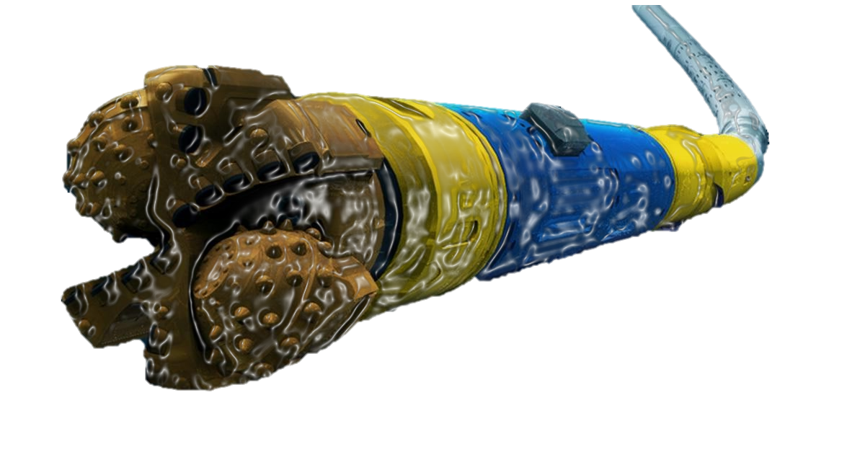
VISCOSIFIERS/SUSPENDING AGENTS
BENTONITE
Drilling-grade barite is produced from commercial barium sulfate-containing ores. BARITE has a
specific gravity of 4.2 and can be used to increase density in water and oil-based systems up to 2516 kg/m³. API Specification 13A, Section 7.

XANTHAN GUM / XC POLYMER
Drilling-grade hematite is produced from commercial ores, and may be a single ore or blends of hematite ores. Minor amounts of common accessory materials, other than the iron oxide (Fe2O3) mineral, include silicon oxide, aluminum oxide, calcium oxide, and magnesium oxide.
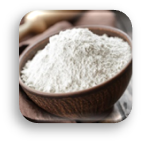
POLY ANIONIC CELLULOSE ( PAC-HV )
Drilling-grade barite is produced from commercial barium sulfate-containing ores. BARITE has a
specific gravity of 4.2 and can be used to increase density in water and oil-based systems up to 2516 kg/m³. API Specification 13A, Section 7.

CARBOXY METHYL CELLULOSE (CMC-HV )
Drilling-grade hematite is produced from commercial ores, and may be a single ore or blends of hematite ores. Minor amounts of common accessory materials, other than the iron oxide (Fe2O3) mineral, include silicon oxide, aluminum oxide, calcium oxide, and magnesium oxide.
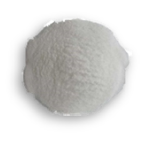
LOSS CIRCULATION MATERIALS (LCM)
CALCIUM CARBONATE
Acid soluble grinded Calcium Carbonate. It is used as a Bridging and a weighing agent used in drilling. It is used to increase mud density and is preferred to Barite as it is acid Soluble. It is grinded in three sizes Coarse, Medium and Fine.
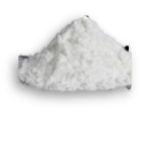
LIMESTONE CHIPS
Limestone is a sedimentary rock, composed mainly of skeletal fragments of marine organisms such as coral, forams and molluscs. Its major materials are the minerals calcite and aragonite, which are different crystal forms of calcium carbonate (CaCO3).

WALNUT SHELL
Limestone is a sedimentary rock, composed mainly of skeletal fragments of marine organisms such as coral, forams and molluscs. Its major materials are the minerals calcite and aragonite, which are different crystal forms of calcium carbonate (CaCO3).
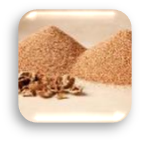
OYSTER SHELL (C,M,F)
Limestone is a sedimentary rock, composed mainly of skeletal fragments of marine organisms such as coral, forams and molluscs. Its major materials are the minerals calcite and aragonite, which are different crystal forms of calcium carbonate (CaCO3).
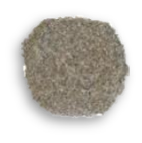
MICA (C,M,F)
Limestone is a sedimentary rock, composed mainly of skeletal fragments of marine organisms such as coral, forams and molluscs. Its major materials are the minerals calcite and aragonite, which are different crystal forms of calcium carbonate (CaCO3).
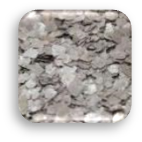
SCAVENGERS| BIOCIDES |CORROSION INHIBITORS
O2 SCAVENGER
Oxygen scavengers or oxygen absorbers are added to enclosed packaging to help remove or decrease the level of oxygen in the package. There are many types of oxygen absorbers available to cover a wide array of applications.

H2S SCAVENGER
Zinc Carbonate is effective as a scavenger at the pH levels found in drilling fluids. It is recommended that a pH above 10 be maintained whenever H2S is expected. This high alkalinity converts the dangerous H2S gas to less toxic bisulfide (HS-) and sulfide (S2-) ions.

BIOCIDE
Biocide is a Chemical additive used in the Oil field to reduce the Slime forming bacteria or to control the Sulfate-reducing bacteria and inhibit the microorganism growth or Bacterial Degradation of the Drilling Fluid additives or water-based Muds.

CORROSION INHIBITOR FOR W.B MUD
A corrosion inhibitor is a chemical compound that, when added to a liquid or gas, decreases the corrosion rate of a material, typically a metal or an alloy.
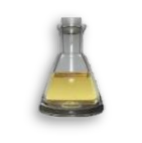
CORROSION INHIBITOR FOR O.B.MUD
Corrosion rate of mild steel is greatly decreased by the addition of imidazoline derivate or quaternary ammonium salt into the drilling fluids.

OIL BASED MUD ADDITIVES
DRILLING MUD EMULSIFIER
(D.M.E) A chemical used in preparation and maintenance of an oil- or synthetic-base drilling fluid that forms a water-in-oil emulsion (invert emulsion)

OBM PRIMARY EMULSIFIER
OBM Primary Emulsifier is widely used in in different mud densities and oil/water ratios in order to increase emulsification between water and oil phases, increase temperature stability and viscosity, minimize filtration and help to forming thin filter-cake in wellbore surface.
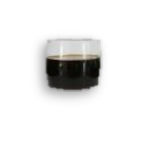
OBM SECONDARY EMULSIFIER
Widely used in in different mud densities and oil/water ratios in order to increase thermal stability, improve resistance to contaminants and wetting solids in OBM systems.
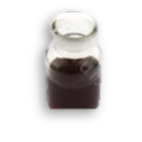
ORGANOCLAY VISCOSIFIER
Is a specially selected Amine Treated Bentonite. It is designed to act as a rheological additive in oil based fluids and drilling muds. It functions as a Viscosifier and gelling agent in oil and synthetic based mud systems.

CLAY AND SHALE STABILIZER
PARTIALLY HYDROLYZED POLYACRYLAMIDE (PHPA)
A class of water muds that use partially-hydrolyzed polyacrylamide (PHPA) as a functional additive, either to control wellbore shales or to extend bentonite clay in a low-solids mud. PHPA is believed to seal microfractures and coat shale surfaces.

RESINEX
An asphaltic mud additive that has been reacted with sulfite to add anionic sulfonate groups to the complex molecular structure. Sulfonate groups make an additive water dispersible, depending on the extent of sulfonation.
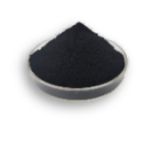
SULFONATED ASPHALTS
Sulfonated asphalt is a specialized drilling fluid additive , well-bore shale stabilizer and shale inhibitor manufactured by a specialized process of sulfonation to impart properties like water solubility, lubricity, filtration control, and bentonite inhibition.

SODIUM SILICATE
Sodium silicate is the technical and common name for a mixture of such compounds, chiefly the meta silicate, also called water glass, water glass, or liquid glass. The product has a wide variety of uses.
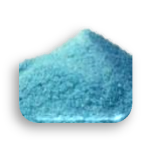
FLUID LOSS CONTROL ADDITIVES
DRILLING STARCH (API 13A)
A drilling-mud additive used to control fluid loss in water muds ranging from freshwater to saturated-salt to high-pH lime muds. They are subject to bacterial attack unless protected by high salinity or bactericide. Drilling-grade natural starch has API/ISO specifications for quality.
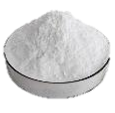
LOW VISCOSITY DRILLING STARCH (GREEN)
It is an economical and very effective filtration control additive. It works well in all water including fresh water, highly saline water, hard water and can be used effectively in most mud systems. It reduces fluid Loss and increases viscosity.

LOW VISCOSITY DRILLING STARCH FOR H.T
A modified starch polymer derived from an unmodified starch having an amylopectin content. The modified starch polymers provide improved high temperature fluid loss performance when incorporated into well drilling fluids.

MEDIUM VISCOSITY DRILLING STARCH (RED)
It provides Economical Method of filtration Control, can be used in the full range of water types as KCl,NaCl,MgCl2,CaCl2, stabilizes rheology, provides well bore stability and filtration control, do not damage the formations, contains preservatives and performs over a wide PH range.

POLYANIONIC CELLULOSE ( PAC-LV )
Polyanionic Cellulose can be used in various drilling fluid systems and shows very good fluid loss reducing capability especially in salt water, sea water and saturated salt water drilling fluids.

CLAY AND SHALE STABILIZER
OBM HIGH TEMPERATURE FLUID LOSS CONTROL
It Improves lubricity thereby reducing torque and drag of the drilling string, seals small fractures in stressed shale formulation, prevents bit and down hole assembly bailing by preferentially oil wetting the drill string and controls high temperature water loss.

OBM FLUID LOSS CONTROL AGENT
This versatile mud conditioner contributes to the stability of drilling fluids, stabilizes shale, inhibits dispersion of drilled solids, reduces toactsrque and drag, controls high temperature water loss and as an alternative to oil usage etc. and aids emulsification of oil.

CARBOXY METHYL CELLULOSE ( CMC )
A low viscosity technical grade dispersible Carboxymethyl Cellulose fluid loss additive designed to reduce API filtration rate with minimum increase in viscosity in water based drilling fluids.

WORK OVER & COMPLETION FLUIDS
CALCIUM BROMIDE POWDER
Calcium bromide is the name for compounds with the chemical formula CaBr2(H2O)x. Individual compounds include the anhydrous material, the hexahydrate, and the rare dihydrate. All are white powders that dissolve in water, and from these solutions crystallizes the hexahydrate.

CALCIUM BROMIDE LIQUID
It is an economical and very effective filtration control additive. It works well in all water including fresh water, highly saline water, hard water and can be used effectively in most mud systems. It reduces fluid Loss and increases viscosity.

ZINC BROMIDE SOLUTION
A modified starch polymer derived from an unmodified starch having an amylopectin content. The modified starch polymers provide improved high temperature fluid loss performance when incorporated into well drilling fluids.

POTASSIUM CHLORIDE
Potassium chloride (KCl) is a soluble salt that is an extremely efficient shale stabilizer when drilling hydro sensitive clays and shales. Inhibition is produced through exchange; the potassium ion enters between the individual clay platelets in the shale so that they are held together.

CALCIUM CHLORIDE (77%) / (94-97%)
Cacl2 is one of the most popular work over and completion fluids for the oilfield industry chemically known as Calcium Chloride and is used as a drilling completion, work over, perforating and packer fluid, widely used in the Drilling Industry.

DRILLING SALT (SODIUM CHLORIDE)
Sodium chloride is the salt most responsible for the salinity of seawater and of the extracellular fluid of many multicellular organisms. In its edible form of table salt, it is commonly used as a condiment and food preservative.

ANTI-FOAM | DEFOAMER | FOAM ADDITIVES
SILICONE DEFOAMER
A defoamer or an anti-foaming agent is a chemical additive that reduces and hinders the formation of foam in industrial process liquids. Commonly used agents are insoluble oils, polydimethylsiloxanes and other silicones, certain alcohols, stearates and glycols.

COMMERCIAL CHEMICALS
CAUSTIC SODA
The common name for sodium hydroxide [NaOH]. Caustic soda is used in most water-base muds to increase and maintain pH and alkalinity. Proper training and equipment are needed to handle it safely.
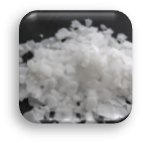
SODA ASH
It most commonly occurs as a crystalline decahydrate, which readily effloresces to form a white powder, the monohydrate. Pure sodium carbonate is a white, odorless powder that is hygroscopic. It has a strongly alkaline taste, and forms a moderately basic solution in water.
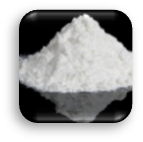
SODIUM BICARBONATE
Commonly known as baking soda, is a chemical compound with the formula NaHCO3. It is a salt composed of sodium ions and bicarbonate ions. Sodium bicarbonate is a white solid that is crystalline but often appears as a fine powder.

CITRIC ACID
Citric acid is a weak organic acid that has the chemical formula C6H8O7. It occurs naturally in citrus fruits. In biochemistry, it is an intermediate in the citric acid cycle, which occurs in the metabolism of all aerobic organisms.
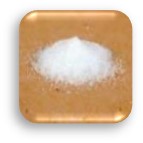
CALCIUM CHLORIDE (77%) / (94-97%)
GLYCOL (CLOUD POINT)

LIME
Lime is a calcium-containing inorganic mineral in which oxides, and hydroxides predominate. Lime is calcium oxide or calcium hydroxide. It is also the name of the natural mineral (native lime) CaO which occurs as a product of coal seam fires and in altered limestone xenoliths in volcanic ejecta.
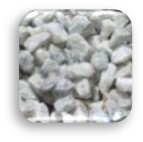
HYDROCHLORIC ACID 33%
Hydrochloric acid plays a key role in recovering oil and natural gas from geologic formations. Hydrochloric acid aids in the removal of obstacles that form in the wells during the drilling process.

LUBRICANT & SPECIALTY ADDITIVES
BIT LUBRICANT
BIT LUBE is vegetable based oil which was developed specifically for the diamond drilling industry. Its extreme pressure lubrication properties were designed for the operating parameters at the face of an impregnated diamond bit giving improved penetration rates and extended bit life.

STUCK PIPE FREEING AGENT
PIPE-LAX stuck-pipe additive is a liquid one-drum product for preparing weighted oil-base spotting fluids. It contains gallants, emulsifiers, wetting agents and filter-cake-cracking materials.

